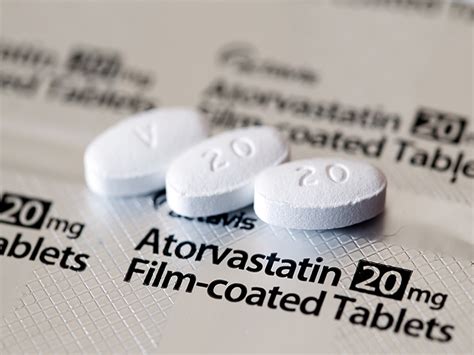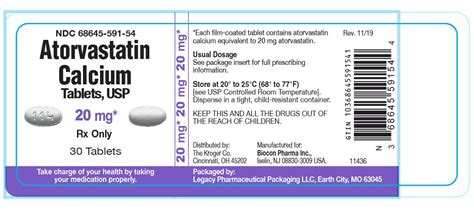Intro
Discover 5 uses of Atorvastatin, a statin medication, for lowering cholesterol, reducing heart disease risk, and managing hyperlipidemia, also exploring its effects on cardiovascular health, stroke prevention, and plaque buildup.
The importance of managing cholesterol levels cannot be overstated, as high cholesterol is a significant risk factor for heart disease, the leading cause of death worldwide. One of the most commonly prescribed medications for lowering cholesterol is Atorvastatin, a statin that has been shown to be effective in reducing the risk of cardiovascular events. Atorvastatin works by inhibiting the enzyme HMG-CoA reductase, which plays a central role in the production of cholesterol in the liver. By reducing the amount of cholesterol produced in the liver, Atorvastatin helps to lower the levels of low-density lipoprotein (LDL) cholesterol, also known as "bad" cholesterol, in the blood.
Atorvastatin has been extensively studied, and its benefits in reducing the risk of heart disease have been well established. In addition to its cholesterol-lowering effects, Atorvastatin has also been shown to have anti-inflammatory properties, which may help to reduce the risk of cardiovascular events. Furthermore, Atorvastatin has been found to be effective in reducing the risk of stroke and peripheral artery disease, making it a valuable medication for patients with a range of cardiovascular conditions. With its proven track record and relatively low risk of side effects, Atorvastatin has become a mainstay of treatment for high cholesterol and related conditions.
The use of Atorvastatin has been widespread, and its effectiveness has been demonstrated in numerous clinical trials. One of the most notable studies, the ASCOT trial, found that Atorvastatin significantly reduced the risk of cardiovascular events in patients with high blood pressure and high cholesterol. Another study, the CARDS trial, found that Atorvastatin reduced the risk of major cardiovascular events in patients with type 2 diabetes. These studies, along with many others, have helped to establish Atorvastatin as a leading medication for the treatment of high cholesterol and related conditions.
Benefits of Atorvastatin

How Atorvastatin Works
Atorvastatin works by inhibiting the enzyme HMG-CoA reductase, which plays a central role in the production of cholesterol in the liver. By reducing the amount of cholesterol produced in the liver, Atorvastatin helps to lower the levels of LDL cholesterol in the blood. Atorvastatin also increases the production of high-density lipoprotein (HDL) cholesterol, also known as "good" cholesterol, which can help to remove excess cholesterol from the blood and reduce the risk of cardiovascular events.Common Uses of Atorvastatin

Side Effects of Atorvastatin
While Atorvastatin is generally well-tolerated, it can cause side effects in some patients. Some common side effects of Atorvastatin include: * Muscle pain: Atorvastatin can cause muscle pain, which can range from mild to severe. * Liver damage: Atorvastatin can cause liver damage, which can be serious in some cases. * Increased risk of diabetes: Atorvastatin may increase the risk of developing type 2 diabetes, particularly in patients who are already at risk. * Cognitive impairment: Atorvastatin may cause cognitive impairment, including memory loss and confusion.Precautions and Interactions

Dosage and Administration
The dosage of Atorvastatin will depend on the individual patient and the condition being treated. Atorvastatin is typically taken once a day, with or without food. The usual starting dose of Atorvastatin is 10-20 mg per day, which can be increased to 40-80 mg per day if necessary.Conclusion and Next Steps

We invite you to share your thoughts and experiences with Atorvastatin in the comments below. Have you taken Atorvastatin for high cholesterol or another condition? What benefits or side effects have you experienced? Your feedback can help others who are considering Atorvastatin treatment.
What is Atorvastatin used for?
+Atorvastatin is used to lower cholesterol and reduce the risk of cardiovascular events, such as heart attacks and strokes.
What are the common side effects of Atorvastatin?
+Common side effects of Atorvastatin include muscle pain, liver damage, and increased risk of diabetes.
Can I take Atorvastatin with other medications?
+Atorvastatin can interact with other medications, such as warfarin, gemfibrozil, and cyclosporine. It is essential to consult with a healthcare provider before taking Atorvastatin with other medications.
